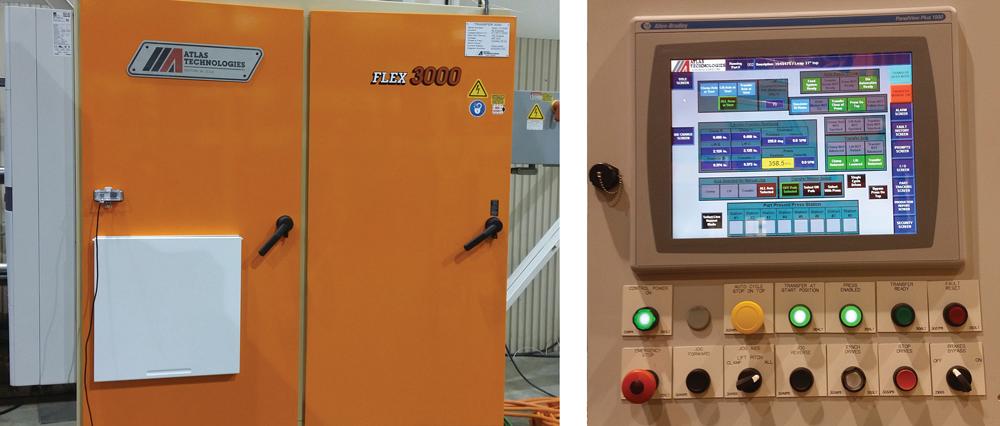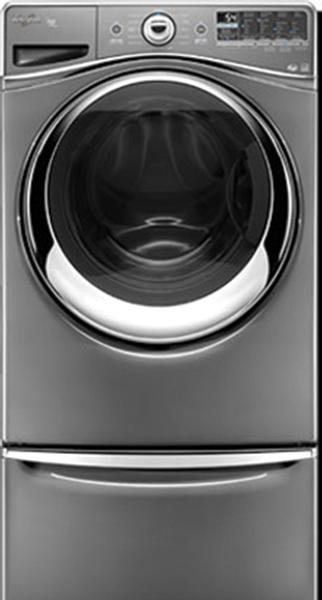Account Manager
- FMA
- The Fabricator
- FABTECH
- Canadian Metalworking
Categories
- Additive Manufacturing
- Aluminum Welding
- Arc Welding
- Assembly and Joining
- Automation and Robotics
- Bending and Forming
- Consumables
- Cutting and Weld Prep
- Electric Vehicles
- En Español
- Finishing
- Hydroforming
- Laser Cutting
- Laser Welding
- Machining
- Manufacturing Software
- Materials Handling
- Metals/Materials
- Oxyfuel Cutting
- Plasma Cutting
- Power Tools
- Punching and Other Holemaking
- Roll Forming
- Safety
- Sawing
- Shearing
- Shop Management
- Testing and Measuring
- Tube and Pipe Fabrication
- Tube and Pipe Production
- Waterjet Cutting
Industry Directory
Webcasts
Podcasts
FAB 40
Advertise
Subscribe
Account Login
Search
Refurbishing servo-drive triaxis transfer systems cost-effectively
Upgrade controls, drives, bearings without complete replacement
- By David Kuch
- July 28, 2014
- Article
- Materials Handling

The latest system controls architecture is PLC-based and uses a range of HMIs, such as large, high-resolution monitors.
So, you invested in a transfer system a decade or so back. The system still works. The framing is solid. But although the bones are strong, the flesh is failing and the mind is gone!
Some parts of your transfer system are outdated or failing, and you cannot get replacements for them. Your control system was fine when you bought it, but you know that more advanced systems are out there today. You’d like to take advantage of the latest technologies in drive control, performance, system diagnostics, and energy savings.
So how can you upgrade your servo-driven transfer system? What new technologies can you access, and which capabilities can you gain by doing so?
Many manufacturers are taking advantage of opportunities to refurbish their transfer systems by upgrading the controls, drive trains, and bearings while reusing their frames, in keeping with reuse sustainability goals and cost-saving initiatives.
Controls
When servo-drive technology was first incorporated into triaxis press transfer systems, direct current (DC) motors were used. DC servomotors now are virtually obsolete in the tri-axis transfer industry domestically. Original equipment manufacturers (OEMs) no longer support those installations. They have discontinued direct replacement of motors and motor components and are no longer investing in the development of the associated communications infrastructure.
In addition, the human-machine interface (HMI) subsystems comprise input screens and microcomputers. Microcomputer operating systems have a very short life span, becoming obsolete rapidly.
Alternating current (AC) motors are now the U.S. standard, providing performance at a reduced price. The current AC motors are dimensionally smaller and totally enclosed. They are not vulnerable to contaminants that are inherent in the stamping press environment. In addition, they do not require special cooling provisions. The associated infrastructure is expansive.
The latest system controls architecture is PLC-based and uses a range of HMIs, such as large, high-resolution monitors. PLC software is commonly used in the North American stamping market. As such, many stampers use it to control existing plant systems and are familiar with its programming language. An HMI typically is exposed and susceptible to damage, so modern HMIs are designed to operate independently of the PLC so that a damaged HMI will not result in a system shutdown.
Drive components are critical to the transfer system’s performance. Today a range of drive components are available, allowing stamping companies to perfectly match the application specifications and requirements. The new components provide significant improvements in acceleration/deceleration performance and torque ratings for use in triaxis, transfer, and torque motion control.
The new controls architectures are multilevel, torque; setup, single-cycle; and full-speed motion control. These three levels allow a stamper to set up tooling and dial in the part path with virtually no finger tooling damage. In addition, an automated homing routine, using the torque motion control, is available, which simplifies the homing process and substantially reduces the time to complete it.
Encoders provide press data for a servo-driven triaxis transfer system. They can include a single smart-quadrant encoder, which provides directional, velocity, and distance press data. This provides a much tighter tolerance to the press motion. This advances earlier encoder technology that could detect direction only by reading the increasing or decreasing values, making it difficult to synchronize the actual press direction.
Bearings
If a system is operating in a repeatable manner, performing to specification, and being well-maintained, do stampers still need to consider changing or upgrading the linear bearings? The answer is yes. They really need to consider all of the potential failure points, especially if exact replacements are not readily available.
Linear bearing designs have evolved, and industry standards have changed. When product changes occur, it is common for bearing manufacturers to continue to offer both the new and previous designs for a period of time. At some point, though, the previous designs must be discontinued because of the increased costs of manufacturing and inventory. Therefore, as transfer systems are updated, the linear bearings are commonly updated also, bringing the transfer’s linear bearing mounting points up to current industry standards. This provides for a platform that is compatible with new industry standards and linear bearings that are readily available as replacements, if or when required.
Whirlpool Ohio refurbishes its transfer systems
Since the mid-1990s, Atlas Technologies Inc. has supported the manufacturing operations at the Whirlpool Clyde, Ohio, facility, when Whirlpool Corporation invested in new stamping systems to produce major panels for its laundry products.
At that time Atlas Technologies was chosen to provide two Atlas Flex 5000 electronic transfers to automate press operations and optimize the output of the press cells. Since then Whirlpool has consistently maintained the equipment, and consequently these press cells continue to be the source for major panel production. Each press cell has completed approximately 65 million cycles and still is in operation.
In 2013 Whirlpool approached Atlas to develop a plan to upgrade or replace the transfers as part of a modernization program for the press cells. A detailed technical and financial evaluation led the team to conclude that employing new technology on the existing machine frames was desirable over the option to replace the units entirely.
Because the mechanical integrity of the existing transfers was solid, Whirlpool’s decision to refurbish was based upon these factors:
- Major machine frames and details are being reused, reducing cost and preserving natural resources and energy.
- Rigging expenses are significantly reduced because main frames stay in place.
- All drive train and bearing surfaces are replaced and upgraded, and all electronic controls and human interfaces are replaced, providing the latest technologies in drive control, performance, and system diagnostics.
All available upgrades are being implemented on the refurbished transfer, including new rail connection techniques, new wireless electrical connection methods for part tracking, electronic torque monitoring, and new kinetics drives.
Refurbishment costs are approximately 75 percent of the cost of new transfers.
About the Author
David Kuch
3100 Copper Ave.
Fenton, MI 48430
810-714-2115
Related Companies
subscribe now

The Fabricator is North America's leading magazine for the metal forming and fabricating industry. The magazine delivers the news, technical articles, and case histories that enable fabricators to do their jobs more efficiently. The Fabricator has served the industry since 1970.
start your free subscription- Stay connected from anywhere

Easily access valuable industry resources now with full access to the digital edition of The Fabricator.

Easily access valuable industry resources now with full access to the digital edition of The Welder.

Easily access valuable industry resources now with full access to the digital edition of The Tube and Pipe Journal.
- Podcasting
- Podcast:
- The Fabricator Podcast
- Published:
- 04/16/2024
- Running Time:
- 63:29
In this episode of The Fabricator Podcast, Caleb Chamberlain, co-founder and CEO of OSH Cut, discusses his company’s...
- Trending Articles
Steel industry reacts to Nucor’s new weekly published HRC price

How to set a press brake backgauge manually

Capturing, recording equipment inspection data for FMEA

Are two heads better than one in fiber laser cutting?

Hypertherm Associates implements Rapyuta Robotics AMRs in warehouse

- Industry Events
16th Annual Safety Conference
- April 30 - May 1, 2024
- Elgin,
Pipe and Tube Conference
- May 21 - 22, 2024
- Omaha, NE
World-Class Roll Forming Workshop
- June 5 - 6, 2024
- Louisville, KY
Advanced Laser Application Workshop
- June 25 - 27, 2024
- Novi, MI



























